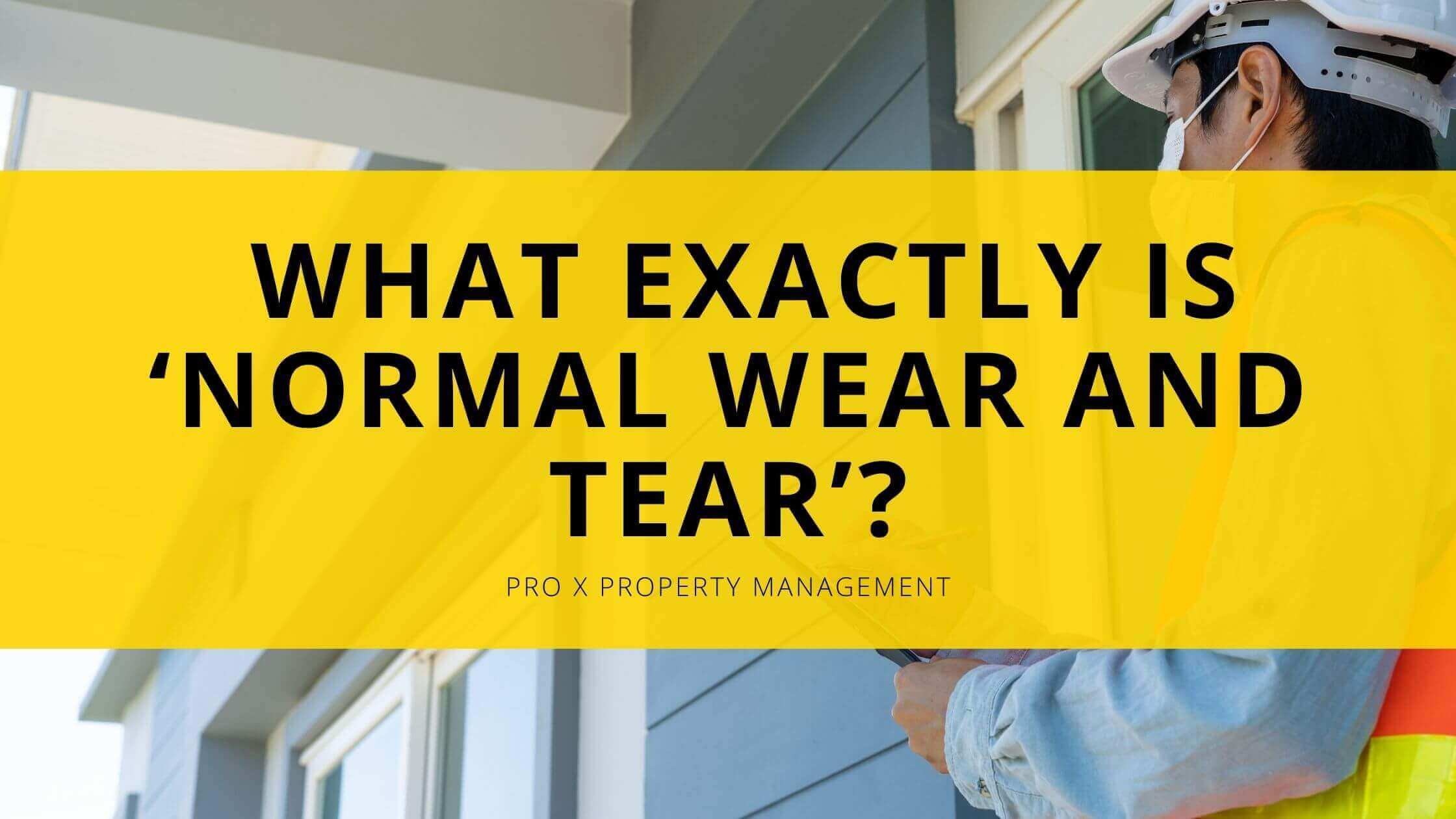
For landlords who are not familiar with renting out a property, it can be easy to confuse normal wear. But when ignored, wear and tear can lead to expensive repairs that may have been easily avoided if the tenants had paid closer attention.
So, when you rent out any property it’s important to know the difference between normal wear and tear on the property and excessive damage. Which is why we at Pro X Property Management have put together this guide.
Knowing What Normal Wear and Tear is
Generally, a landlord can define normal wear and tear as any signs of aging or deterioration on the property that occur from normal use by a tenant. This sort of deterioration would be an expected consequence of tenants living in your property.

Examples of Normal Wear and Tear
Here are some examples of normal wear and tear due to day-to-day use:
- Discolored or ripped wallpaper
- Scratched or peeled wall paint
- Small nail holes in walls
- Scuffed hardwood floor
- Doors not closing properly because of humidity
- Thinning of carpet due to walking
- Vanished filling around bathroom tiles
- Dull washroom fixtures
Normal Wear and Tear Vs Other Damage Types
Many people don’t realize there’s a fine line between normal wear and tear and excessive damage. Normal wear and tear is expected to happen when you use certain items, and it is unavoidable. Whereas any damage that occurs because of negligence is not.
Depending on your lease agreement, excessive damage could mean that the renter has to cover repair costs. But the cost and effort of repairing normal wear and tear is generally the responsibility of the landlord. As is replacing basic items like a faded carpet or torn wallpaper.
Determining if there’s Excessive Damage
Any damage to the property that could have been avoided with proper care and diligence is classed as excessive property damage. This damage could be due to and accident or neglect on the renter’s part. As a landlord, you're allowed to deduct necessary repair costs from your tenant's security deposit.
If you’re wondering whether something is excessive damage or normal wear and tear, try to put yourself in a renter's shoes—if you think that proper care could have prevented the damage, it probably means that it isn't normal wear and tear.
Examples of excessive damage
These are some common examples of property damage that is beyond normal wear and tear:
- Unauthorized paint or wallpaper
- Stains or burn holes in the carpet
- Doors hanging off hinges
- Damaged or broken windows
- Missing blinds or curtains
- Chipped sinks and bathtubs
- Cracks in walls
- Broken tiles or chipped floorboards

Covering Damage Using the Security Deposit
Security deposit law can vary from state to state, but there are a few basics that don’t:
- Be familiar with what specifically constitutes normal wear and tear, and excessive damage.
- Know how much of your tenant’s security deposit is considered reasonable for property damage when they are moving out.
- Acquaint yourself with eviction laws in your area. This will give you an idea of whether or not you can withhold your tenant's security deposit if you have experienced major problems due to poor maintenance in your property.
While most landlords have a provision within their leases that states tenants will repair or pay for any damage done to a property, even if it is due to normal wear and tear. Some disputes between landlords and tenants regarding security deposits still arise.
In this case, please reach out to us at Pro X Property Management. We have years of experience dealing with security deposit and repair disputes and will be able to help.
Use Before and After Photos
A part of your tenant’s job is to take care of a rental unit. Before a tenant moves out of a rental unit, they should be prepared to prove that they kept it in good condition.
If the law permits, landlords can take pictures of the property when renters move in. These can then be compared with photos taken at the move-out time to assess any damage caused during their stay.
Screen Tenants Effectively
There’s no way to completely prevent property damage in your rental unit, but you can reduce it significantly by screening tenants with a tenant application form before you rent to them. Property managers typically have their own form, or you can create your own using an online template.
Before signing on new tenants, set up a face-to-face meeting so you can ask about past living experiences and discuss expectations for respecting property lines and cleanliness.
But, if you find yourself spending more time than necessary on this process, you may want to consider hiring a property management company. Their job is to make sure your renters pay on time, keep up with repairs and maintain your property while they’re living there.

Bottom Line
If you're a landlord or renting out your house, it's important to recognize when to accept responsibility for property damage and when to bill your tenants. Wear and tear is normal in a home, but excessive damage isn’t.
If you have any questions or repair disputes it is a good idea to rech out to us at Pro X Property Management. Property management companies like ourselves, give landlords peace of mind while keeping their rental properties occupied and generating income for you. So, contact us today!
